And to eat, mammoth or paleosoarra?
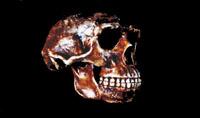
The line of human evolution, more or less of the gorilla and chimpanzee lines, separated 4,500,000 years ago (4.5 million years). These primates who lived in East Africa have traveled different paths. After separation, the first known primate that followed our branch is the so-called Ardipithecus. The Australopithecus were later developed. These first two hominids lived in the humid tropical forest and ate mainly fruits and soft plants. Thereafter they suffered climatologically dependent environmental and diet changes. Today's chimpanzees and gorillas only live in West Africa. In chimpanzees, although there are occasional carnivores, it can be said that they follow a vegetarian diet.
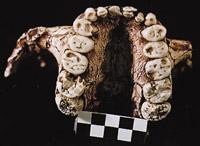
Comparing the dentures of the current man, the chimpanzee and the Australopithecus, it is observed that there are no significant differences. In all three cases there are two types of teeth. On the one hand, the incisors, of course, with pointed edge and that serve to cut the parts of the food. On the other hand, teeth that have the function of chopping food, softening it and forming a food bolus. The similarity of the mouths of the three species suggests that we should have the same type of food as the chimpanzee or the Australopithecus, that is, that fruits and leaves are our original natural food. But the analysis of our mouth may not be entirely reliable.
Although the size and proportion of chimpanzees are similar, about 1 meter tall and 28 kilos in weight, the Australopithecus were extremely ambitious. They were carnivorous prey, so in their deposits are bones of other herbivores. They lived in the subtropical jungle. But 2.5 million years ago the climate changed. Large temperature fluctuations were accompanied by landings and glaciations. At that unstable time, in West Africa the forest became savannah and the forests disappeared. So the hominids had to learn to live on the plains. To respond to the new situation, two genera of hominids emerged with different types of adaptation to the environment.
On the one hand, the Paranthropus hominids cultivated the ability to eat seeds. This forced to grind hard foods. Over time, the incisors atrophied, but the teeth, cheek, and skull shot up. These hominids disappeared.
The second solution to climate change is that of our evolution line, Homo. These first “human beings” had approximately our height and body shape. Homo began to eat in the new biotope proteins and fats of meat. At first they were scavengers and then formed in hunting. However, the type of dentition mentioned above remained. That is the key. There was technological and non-morphological adaptation. That is, they learned to use tools.
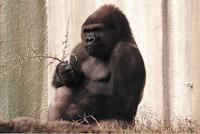
It is another argument that strengthens this theory. The digestive vessels of herbivores and vegetarians in general are very long. The digestion of plant fibers, due to its difficulty, requires long processes and complex organs. It is known, for example, that cows have a specialized stomach to eat grass. The absorption of meats in the intestine is rapid. Therefore, the digestive vessels of carnivores are usually short. Chimpanzees are vegetables with a long tube. The human digestive tract is much smaller, adapted to eat meat.
The Homo, looking for new places to live, began to travel and left Africa. It is not clear when man came to Asia, but there are deposits in China and Java Island. The man discovered in the latter is called Homo erectus. They are fossils almost a million years ago.
Alongside Africa, Europe has outstanding curiosities. The old continent has seasons and Africa does not. Therefore, the vegetation is very conditioned in Europe. On the other hand, the winter temperature drops a lot. In this environment, man had to learn to live. For Homo the key to survival in Europe was the alternation of meat and plants in the diet.
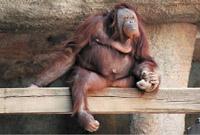
Europe's oldest remains are loose bones of similar ages. However, in the summer of 1994, around eighty human fossils and about two hundred stone tools of approximately 800,000 years were found at a site in the Atapuerca range. This large site is called "Gran Dolina". The discovery of this fossil set led to a debate about the first inhabitants of Europe. ("In recent days, older fossils have been found in Russia. If this discovery is confirmed, it may be necessary to give rise to new theories.)
At least six bones were found in the "Gran Dolina". The Atapuerca working group confirmed that they did not belong to the known species and was called Homo antecessor. In the fossils found a special feature appears: the remains of cannibalism. In some skulls you can see signs left with stones. This means that others of the same species ate their flesh. Paleontologists consider cannibalism in general uncommon. It is the result of a concrete situation, but from that situation arose a bone deposit.
Another important site of Atapuerca is the so-called "Sima de los Huesos". Fossils of 300,000 years were found there. There are 32 human beings, about two hundred and remains of several animals. It is a curious site, as it was not a place of residence. From time to time the animals, especially the bears, fell into that cave. Whole human bones were found, but no stone tools or remains of herbivores. Therefore, the cave cannot be considered a cave of a carnivore. The most accepted theory among researchers is that the dead were thrown there, fulfilling a certain rite. If so, it will be the oldest type of funeral known today.
The most famous of these human skulls is called "Atapuerca 5". One of its characteristics is to have the cuts almost totally eroded. Maybe that has no gastronomic reason behind it. Eating meat does not erode your teeth. But eating plants do. However, do not forget that the skins were worked verbally and that for other obligations you can use the teeth.
Another remarkable bone found is the pelvis that has remained intact. Its size is huge. From the dimensions of this pelvis you can calculate the size of the whole body. Paleontologists calculate a musculature of about one hundred kilos, which should be added fats. To feed such a large body you need many calories a day. Therefore, it is essential to think that not only did they eat plants. They were hunters and carnivores.
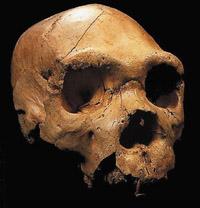
As mentioned, the fossils found in the "Sima de los Huesos" are 300,000 years old. Despite doubts about species classification, Arsuaga and his companions claim that these fossils belong to the hominid Homo Heilderbergensis. This is at least the most coherent theory found by researchers. It is believed that this type of hominid is in the evolutionary line of the Man of Neanderthal, that is, from the species Homo antecessor found in the "Great Dolina", human evolution was divided into two lines. The first, ranging from the species Homo heilderbergensis to the species Homo neanderthalensis, and the second, traveling to the current species Homo sapiens (see evolution scheme on page 25). This distribution did not occur in one place. The evolution of the Homo antecessor in Europe was directed to the species Homo neanderthalensis and in Africa to Homo sapiens.
When the man of Atapuerca disappeared, or rather continued evolution, in Europe the Neanderthal dominated. Numerous deposits and fossils of this species are known. It is known that the dead were buried and manufactured and used tools. Therefore, it must be recognized that it was an intelligent species. It should be noted especially that they did not belong to our same species or to our ancestors.
When from Homo antecessor our evolutionary line developed in Africa, taking intermediate steps, appeared the Homo Sapiens. People call this species "Cro-Magnon Man." He left Africa and entered Europe over time. Consequently, he lived in Europe with Neanderthal, but there was no confusion. The situation was very curious. But the first was gradually disappearing, until Homo Sapiens was left alone.
At that time the glaciation was reflected in the drawings made by Homo Sapiens. In the caves, in addition to lions and antelopes, hairy mammoths and rhinos were drawn. In Euskal Herria you can also see them. For example, in the cave of Altxerri (Orio) are drawn the snow deer and the arctic fox. Remains of mammoth have also been found in southern Spain. The humans of the time were necessarily carnivorous.
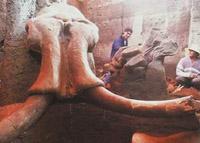
10,000 years ago, with the melting of ice, agriculture and livestock began to develop. It is estimated that the Iberian Peninsula reached 7,000 years ago. This decisively influenced the diet. The human population increased because more people could be fed, but the diet is also impoverished because it was based on a few plants or animals. They ruled out some species that were previously eaten as a counterpart to a large amount of food.
As a result, the size of human beings was decreasing and reached its lowest point in the Middle Ages. Thereafter, communications improved and consanguinity progressively decreased. In addition, trade evolved and increased the variety of food. Therefore, richer diets began to recover and the tendency to increase the size of the human being was repeated. It is worth mentioning the XX Paleolithic. That life expectancy has not varied until the twentieth century (around 30-40 years).
We already have the answer to the question that was raised at the beginning. The human body belongs to the carnivorous nature, although the support of food technology is essential. This answer does not support all the arguments of carnivores, because many other things must be taken into account, but at least it is the starting point to understand us. In addition, what paleontology means is undoubtedly a general view of life and that is not little.
Buletina
Bidali zure helbide elektronikoa eta jaso asteroko buletina zure sarrera-ontzian











